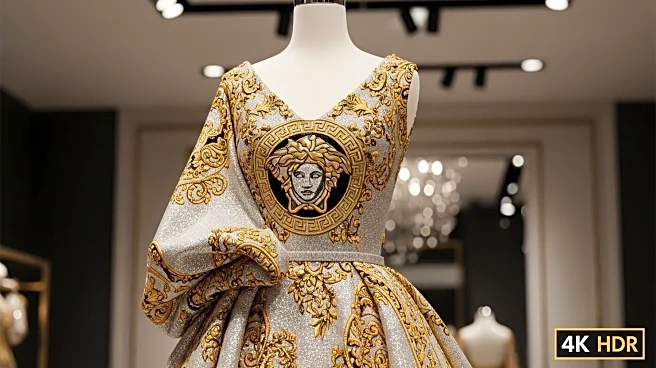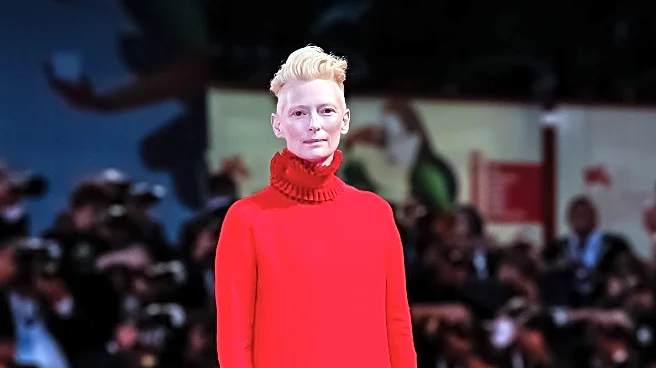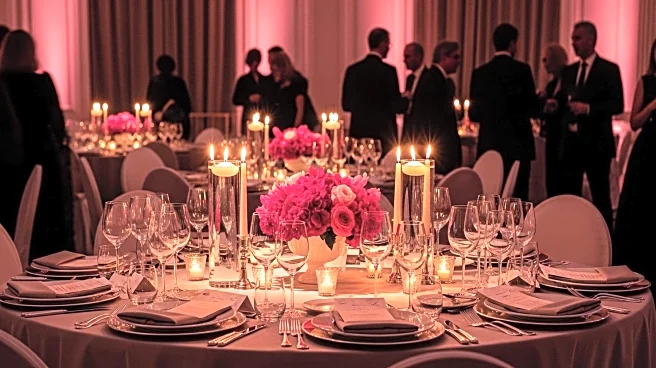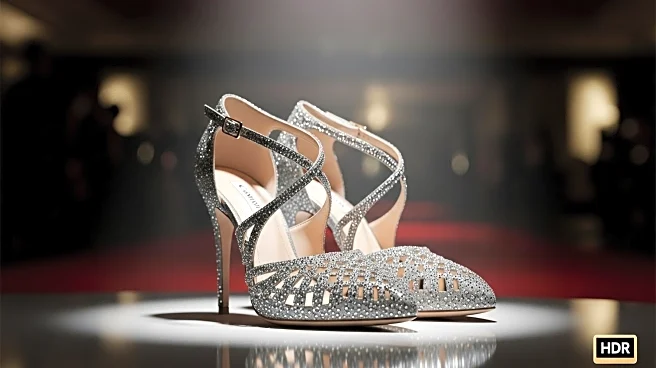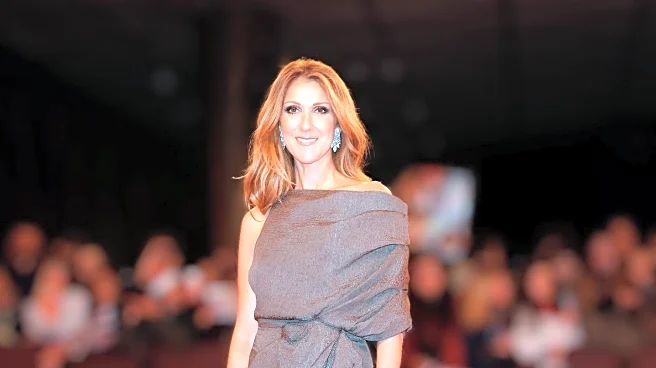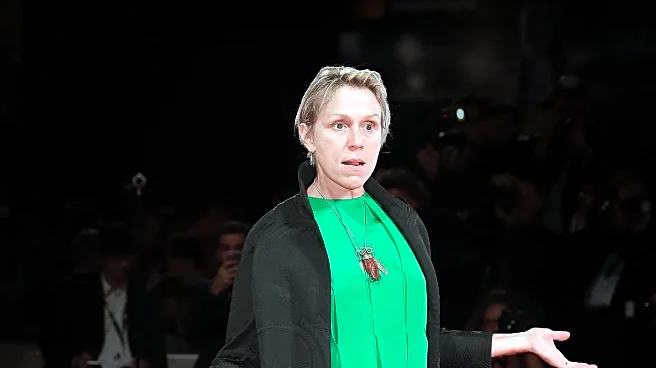What is the story about?
What's Happening?
Amanda Seyfried made a notable appearance at the Venice Film Festival, wearing a Versace outfit previously donned by Julia Roberts. Seyfried attended the festival to promote her new film, 'The Testament of Ann Lee,' and chose to wear the same business casual look that Roberts had worn last week for the promotion of her film 'After the Hunt.' The outfit, designed by Dario Vitale, includes a tailored blue wool jacket, a striped button-down, and denim pants, accessorized with a heritage gold buckle belt and woven leather shoes. Both actresses share the same stylist, Elizabeth Stewart, who facilitated the outfit exchange. Stewart expressed gratitude on Instagram, highlighting the sustainability aspect of sharing fashion pieces.
Why It's Important?
The exchange between Amanda Seyfried and Julia Roberts underscores a growing trend in the entertainment industry towards sustainability and resource sharing. By reusing outfits, celebrities can reduce waste and promote eco-friendly practices. This move also highlights the collaborative nature of the industry, where stylists and designers play a crucial role in shaping public appearances. The visibility of such practices at high-profile events like the Venice Film Festival can influence broader fashion trends and encourage more sustainable choices among consumers and designers alike.
What's Next?
As sustainability becomes a more prominent theme in fashion, it is likely that more celebrities will adopt similar practices, borrowing and sharing outfits for public appearances. This could lead to increased collaboration between designers and stylists to create versatile pieces that can be worn by multiple individuals. The fashion industry may see a shift towards creating timeless designs that are not only stylish but also environmentally conscious, potentially influencing consumer behavior and industry standards.
Beyond the Headlines
The practice of sharing outfits among celebrities could also have cultural implications, challenging traditional notions of exclusivity and ownership in fashion. It may encourage a more inclusive approach to style, where the focus is on creativity and expression rather than individual possession. This could foster a sense of community within the industry, promoting values of generosity and collaboration.
AI Generated Content
Do you find this article useful?
